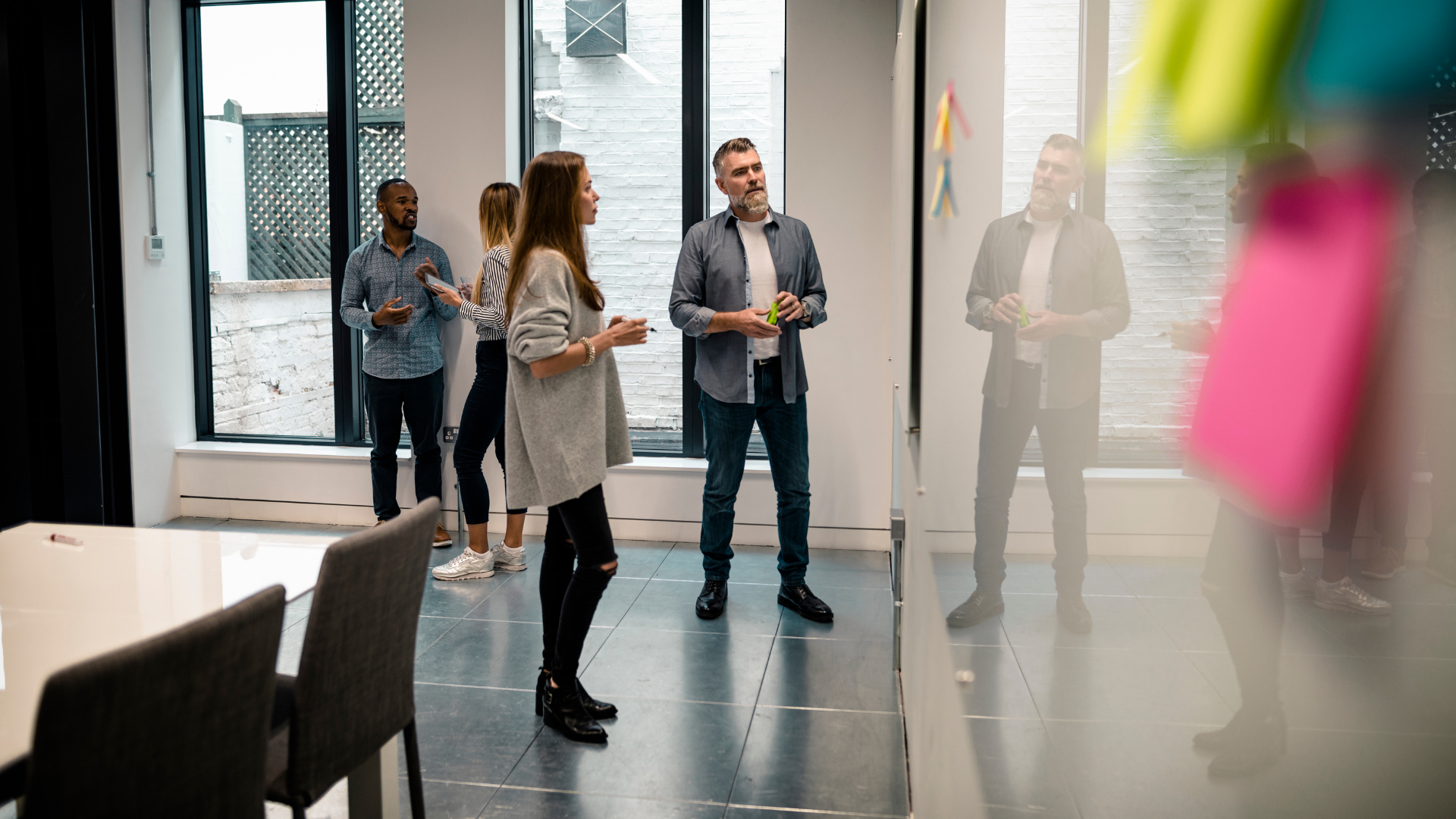CASE STUDY: COLLABORATIVE PROTOTYPE DEVELOPMENT WITH DESIGN THINKING
Realisation of design thinking workshops for the efficient development of an innovative software prototype
“We’ve always done it this way!”
Does this sentence sound familiar to you? Companies often get stuck in familiar routines that jeopardise their competitiveness in the long term. But how can innovative solutions be developed without wasting valuable resources?

Due to new customer requirements and the increasing complexity of projects, an international company was faced with the growing risk of not being able to maintain the consistency of its own delivery products. To avoid this, in-house software was to be developed that would increase the efficiency of internal processes and strengthen the company’s market position.
With this in mind, we were commissioned to support the development of an innovative software prototype. The aim was to take into account the multitude of customer requirements as well as the interests of the various stakeholders – without consuming an excessive amount of resources.

In order to cover all areas of interest, we organised a design thinking workshop with an interdisciplinary team of software developers, management and process owners. The aim of the workshop was to gain a common understanding of the problem and to develop a conceptual solution efficiently and in a problem-orientated manner at a high level of abstraction. The collaborative and agile nature of the design thinking approach enabled us to realise results quickly.
Design thinking is an approach that is specifically used to develop creative solutions and innovations. Multidisciplinary teams work in a repetitive process to develop practice-orientated solutions. The focus is always on the users.

Der Workshop durchlief drei zentrale Phasen:

1. Understanding the problem
What are the values, goals, needs and challenges of our customers?
At the beginning of the workshop, we carried out an in-depth analysis of the market, the players and the strengths of the company. This ensured that all participants had the same understanding of their own company and environment. The next step was to analyse the customer’s values and goals, needs and challenges.
2. Exploration of the possibilities
What ideas could contribute to finding a solution?
The participants were then able to give free rein to their creativity in a joint brainstorming session: Everyone was able to contribute their ideas for finding a solution and then collect, categorise and evaluate all the suggestions.


3. Development of a solution
How can we concretise the best ideas and develop them into a clear target image for the software solution?
The best ideas were concretised and developed into a clear target image, which formed the basis for deriving requirements for the software solution. Finally, the conceptual solution was reflected upon and analysed in terms of cost and potential.
The workshop offered our customer a platform for trying out, visualising and testing many different options. Within one day, the interests of different stakeholders were united and a holistic conceptual prototype was developed. The basis for the realisation of the first MVP was created.
Conclusion
The iterative nature of the design thinking approach contributed significantly to simplifying and accelerating the process: the collaborative design of the software prototype was followed by a rapid transition to the development phase.
In the long term, the innovative solution promotes the company’s ability to meet the changing demands of the market in the future.
We would like to thank the entire group of participants for their trusting cooperation!
YOUR CONTACT
You’d like to know more or require our support?
We look forward to hearing from you!
